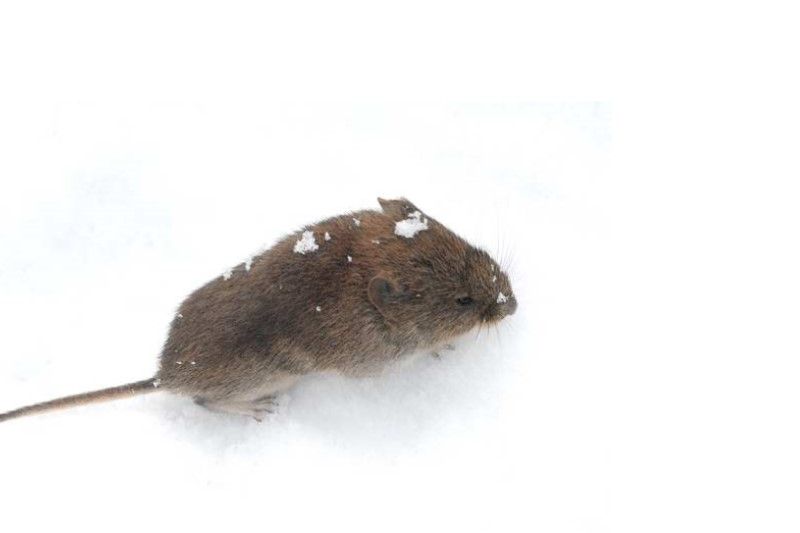Field (or Short-tailed) vole

Status
Native, common and widespread
Population
59,900,000
Scientific name
Microtus agrestis
Field voles are an important small mammal in Britain because so many predators depend on them as a food source. They look very similar to the bank vole but have longer dark brown fur, smaller ears and shorter tails. Field voles are active both day and night, but especially at dusk and dawn. They can be aggressive and often fight with each other, emitting loud squeaks to defend their territory. They are poor climbers but run fast in a network of small runways, lead to underground tunnel entrances. They have a very acute sense of smell and hearing, which they use to find food and evade predators.
Head-body length: 8 – 13 cm
Tail length: A third of the body length
Weight: 14 – 50g
Lifespan: Up to 2 years
Reproduction
Litters of four to six young are born between April and September, and each female may have up to seven litters a year. The young are weaned by three weeks, when the female abandons the nest and finds a new territory where she will breed again.
Diet
Mainly grasses and herbaceous plants, but also bark in winter and occasionally insect larvae.
Habitat
Mainly grassy fields, but also mountain heath, open woodland, dunes and young forestry plantations. Females build a spherical nest of finely shredded grass at the base of a tussock or under logs.
Predators
Barn owls, pine martens, foxes, stoats, weasels, kestrels and snakes.
Threats
Loss of rough grassland habitat; and increased grazing from rabbits.
Conservation status
GB Red List: Least Concern (LC).
Population size and distribution
GB population: 59,900,000. Widely but patchily distributed throughout England, Scotland and Wales, but absent from Ireland, the Isle of Man, Channel Islands, Scilly Isles and many Scottish islands.
Did you know?
Field voles mark their runways with a strong scent to warn away other voles. The markings though are visible in the ultra-violet part of the spectrum, alerting birds overhead to their presence.
